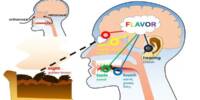Marsupials, which include kangaroos, koalas, and opossums, can provide valuable insights into brain development due to their unique reproductive strategy and early stages of development.
According to the University of Queensland research, features of early human brain development are mimicked in the brains of marsupials. The discovery, according to lead author Dr. Rodrigo Suárez of UQ’s Queensland Brain Institute and School of Biomedical Sciences, could lead to a better understanding of brain patterns linked to neurodevelopmental conditions like autism spectrum disorder (ASD).
“Marsupials are mammals born at extremely early stages – the equivalent to mid-gestation in human terms,” Dr. Suárez said. “Most marsupial brain development happens postnatally, inside the mother’s pouch. Because of this, we’ve been able to study patterns of neural activity in the Australian native fat-tailed dunnart and found they’re similar to those in the human brain in utero.”
These findings highlight early brain development processes that arose millions of years ago and continue with little change, likely influencing the evolution and diversification of the cerebral cortex.
Dr. Suárez
The electrical activity of neurons in marsupial joeys was recorded using light indicators in the study.
“We used advanced microscopy to read how the joey’s developing brain cells first communicated, and we followed the onset and maturation of complex activity patterns,” Dr. Suárez said. “From the start, there were distinct patterns indicating not only that neural activity precedes sensory experience, but that unique electrical features in newborn cells may be critical for the healthy establishment of brain connections. Similarly, subtle flaws in these patterns could result in neurodevelopmental disorders such as ASD.”
Marsupials are known for giving birth to young that are relatively undeveloped and then complete their development outside the womb, usually within a pouch. When compared to placental mammals, this early birth and extended postnatal development allow researchers to study brain development in a more accessible and observable manner.

According to Dr. Suárez, it is well established that human babies respond to stimulation long before birth.
“However, when, where, and how electrical activity begins in the developing brain has largely remained unknown,” he said. “This is primarily due to the fact that only mammals have evolved a cerebral cortex — the wrinkly surface of our brains that controls sensory motor and cognitive tasks – and most experimental models cannot survive outside the uterus at such early stages.”
Dr. Suárez believes that studying marsupials will allow researchers to go further back in brain evolution.
“These findings highlight early brain development processes that arose millions of years ago and continue with little change, likely influencing the evolution and diversification of the cerebral cortex.”
Studies comparing marsupials and placental mammals, including humans, can reveal similarities and differences in brain development. Scientists can identify conserved developmental processes that are critical for brain formation across different mammalian species by examining similarities. Comparative studies give us a broader perspective on brain development and help us understand the various strategies that mammals use to achieve functional brains.
















